If you want to know about the introduction of lighting in architecture or principle of daylighting design or lighting design in a building, please click the link.
Shading devices are important elements in the design of buildings, as they can significantly reduce solar heat gain and glare, while allowing natural light to enter the building. They can be designed to be fixed or adjustable, depending on the level of control desired by the occupants.
When we talk about Climate Responsive Buildings, the most crucial steps in the design process are:
- Proper Orientation
- Choice of Appropriate material
- Design of Shading devices to let in/cut off the direct sun
Vernacular buildings always had climate responsive elements integrated in the design
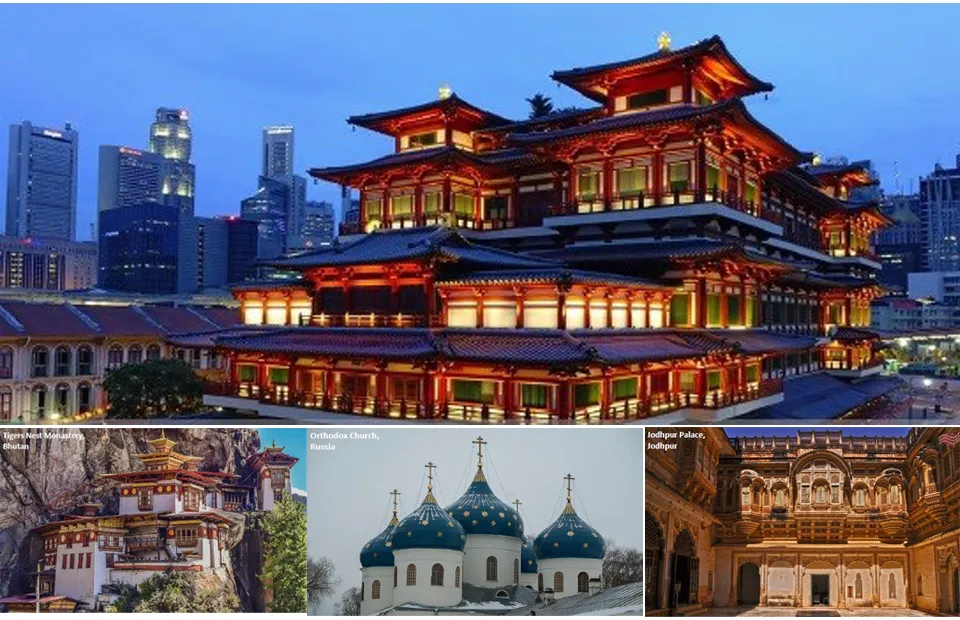
2) Use of shading device
- The decision to on where and when to include shading can greatly affect the comfort level inside a closed space.
- Passive cooling through shading can reduce the indoor temperature from 2.5-4.5 degrees easily.
- Use of shading device can:
- improve building energy performance
- prevent glare
- increase useful daylight availability
- create a sense of security.
Shading from the effects of direct solar radiation can be achieved in many ways:
- Shade provided by the effect of recesses
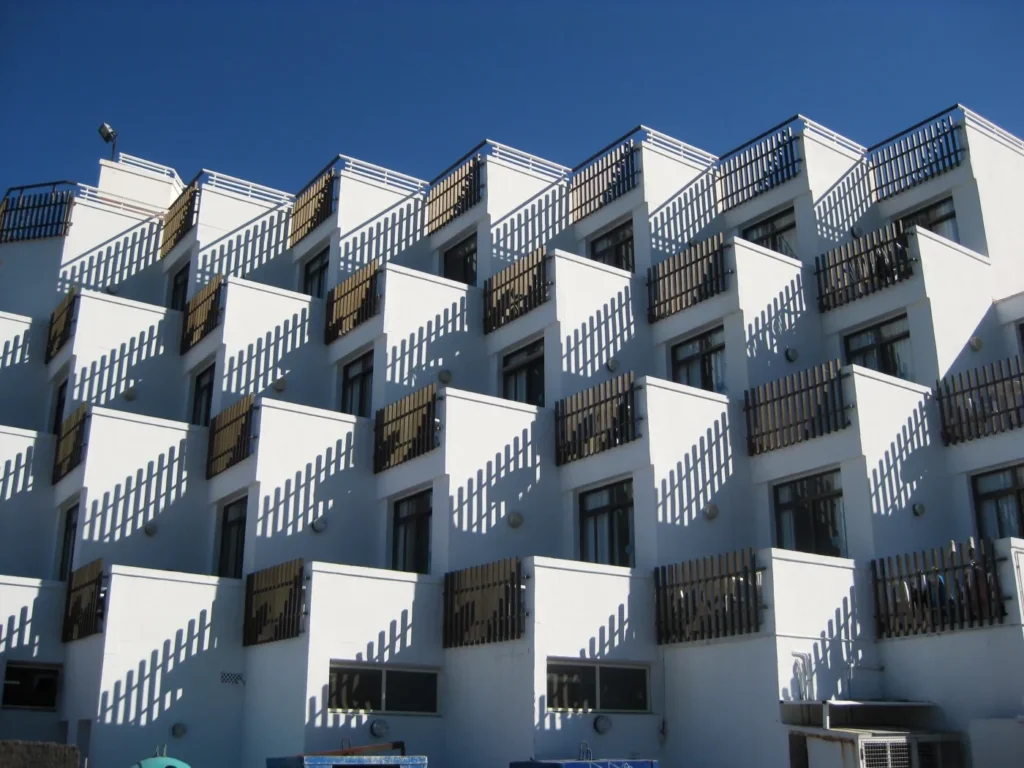
- Shade provided by static or moveable external blinds
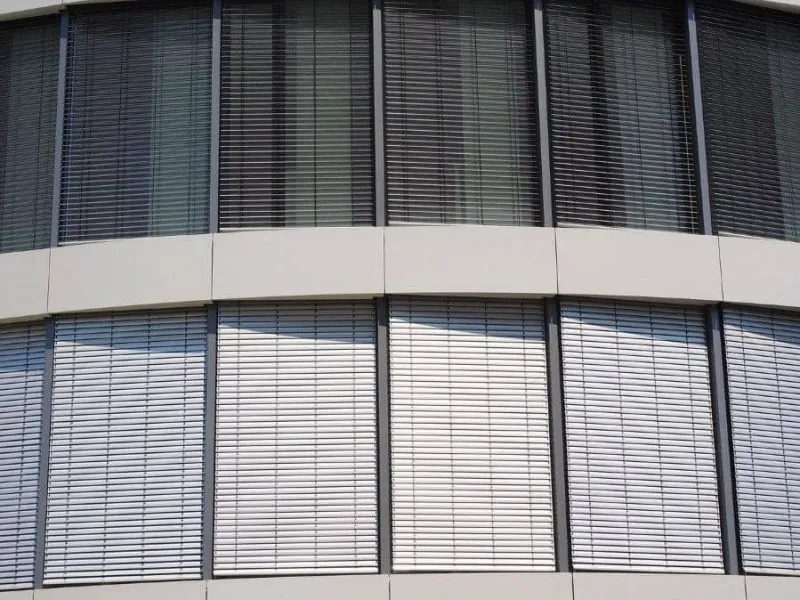
- Transient shading provided by the orientation of the building

- Permanent or transient shading provided by the surrounding buildings, vegetation
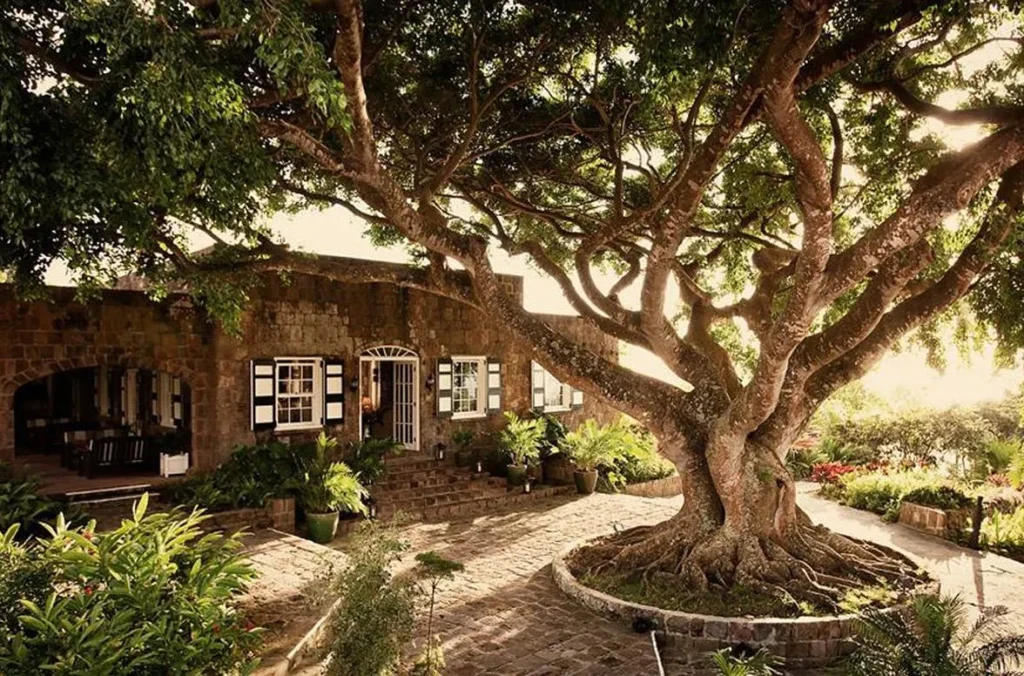
- Shading of roofs by rolling reflective canvass
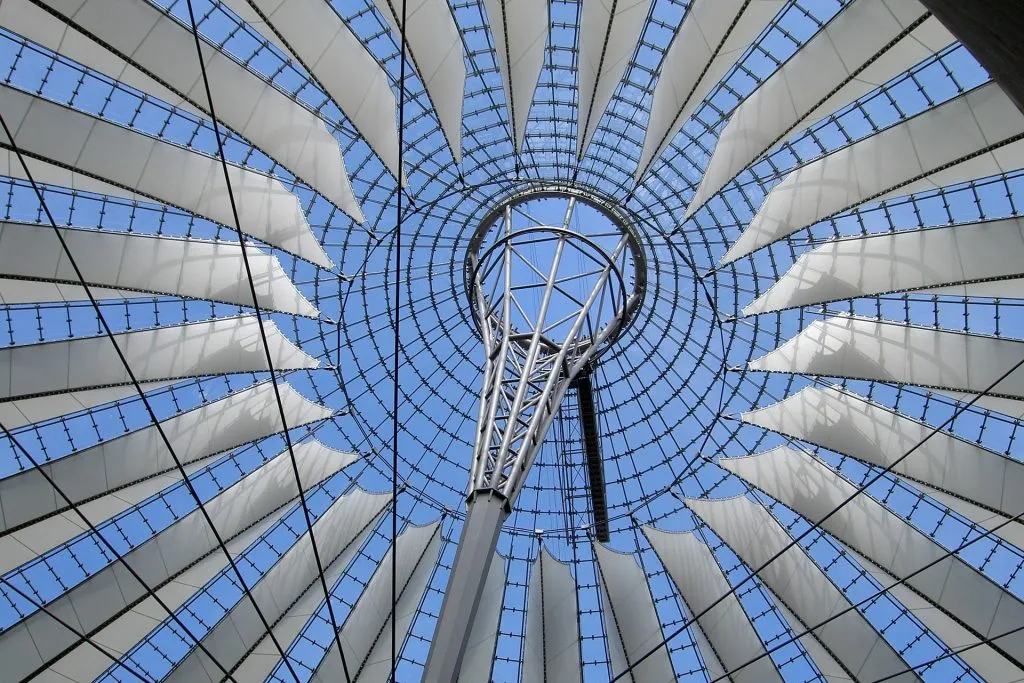
3) The different criteria of shading of buildings for various climatic zones
| Climatic Zone | Shading Requirements |
| Hot and Dry | Complete year-round shading |
| Warm and Humid | Complete year-round shading, but design should be such that ventilation is not affected |
| Temperate | Complete year-round shading, but only during major sunshine hours |
| Cold and Cloudy | No shading |
| Cold and Sunny | During summer months only |
| Composite | During summer months only |
4) How to design a shading device?
- The design of effective shading devices will depend on the solar orientation of a particular building facade.
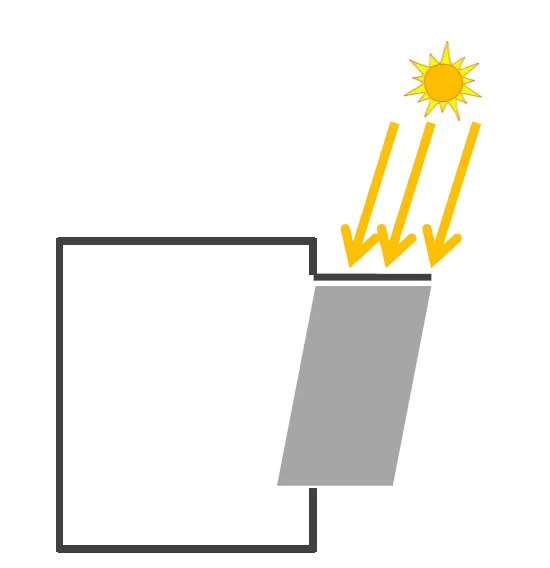
- For example, simple fixed overhangs are very effective at shading south-facing windows in the summer when sun angles are high.
- The design of effective shading devices will depend on the solar orientation of a particular building facade.
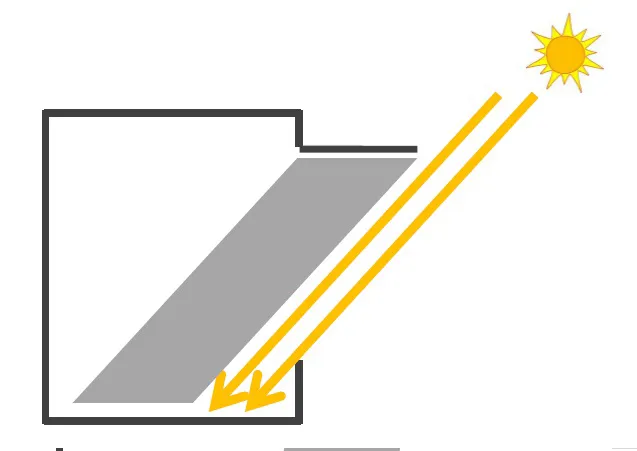
- However, the same horizontal device is ineffective at blocking low afternoon sun from entering west-facing windows during peak heat gain periods in the summer
There are many kinds of shading devices, but they are primarily classified as:
- Internal Shading devices
- External Shading devices
i) Internal shading devices
- They are mainly established in order to provide visual comfort by eliminating glare.
- Further, interior shading devices can contribute to the interior architectural design of rooms without influencing the exterior façade of the building.
- Because of the heat absorption happening inside the building these devices are not very efficient at reducing solar heat gains.
- Internal shading devices are usually adjustable They can be either in form of horizontal or vertical blinds fixed above windows Or good old curtains that are used everyday
Internal shading devices are best used in north or east facing rooms, where there is no risk of overheating in summers
ii) External shading devices
- External shading devices are primarily used to control the amount of radiation that penetrates inside the buildings.
- Some of them are operable, i.e. they can be raised or lowered.
- Two basic types of exterior shading device:
- horizontal
- vertical
- Their effectiveness depends on its: type and placement relative to glass

- When radiation strikes a shading device, a part of it is reflected outwards from its surface, another part is reflected onto the glazing remaining part is absorbed by itself, causing it to heat up.
External shading devices

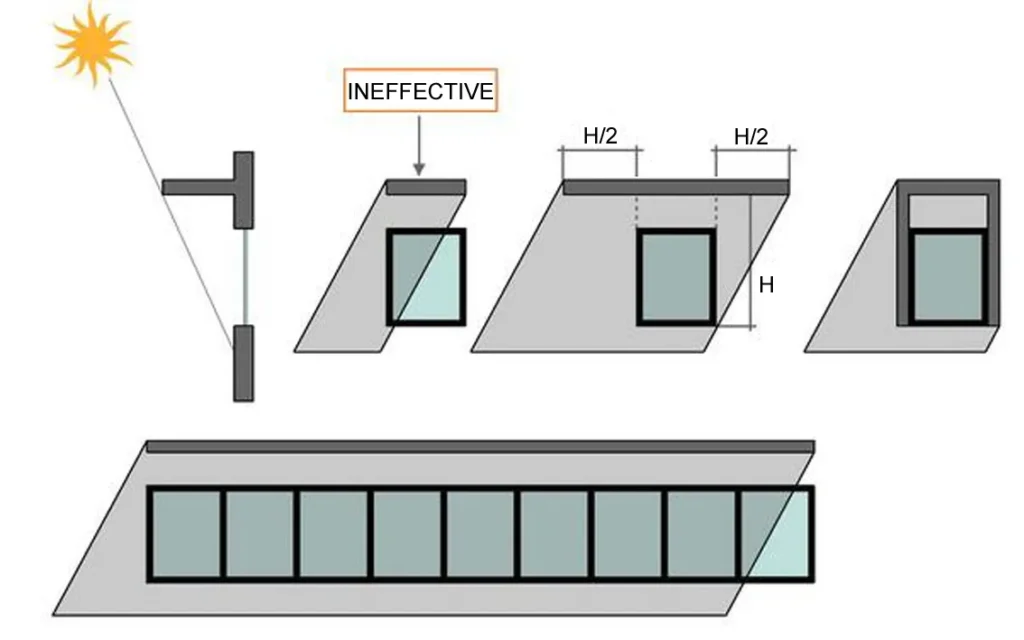
Horizontal shading devices & their design implications
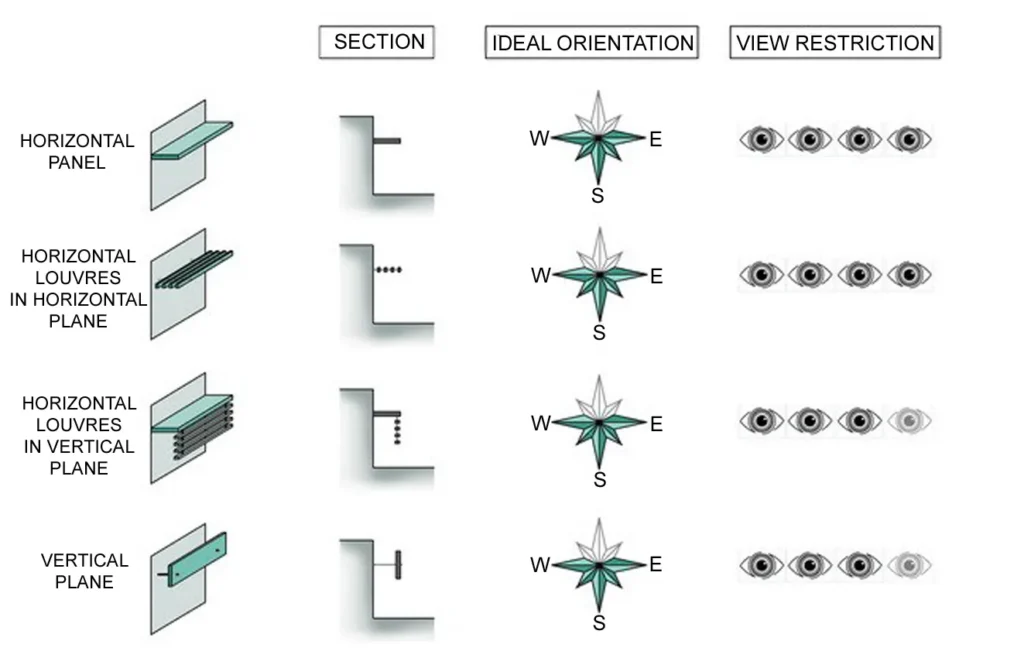
Vertical shading devices & their design implications

5) Internal shading devices vs External shading devices
| Internal shading devices | External shading devices |
| Thermally ineffective in providing any respite | Thermally efficient as they intercept the solar energy before it enters the room |
| Generally, much easier to install and change per taste and season | Carry the disadvantage of not being weatherproof |
| Can be designed as part of the overall interior aesthetics | Can be designed as part of the overall facade aesthetics |
| Butter user control | Less or no user control |
6) Thumb-rules for effective shading design
- Vertical Shading device is most effective when sun is to one side of the elevation and at low angle, such as eastern or western elevation
- Horizontal Shading device is most effective when sun is opposite to the building face considered and at high angle, such as for north and south facing walls

6) Shading strategies
i) Shading strategies for East & West Elevations
- The best solution by far is to limit using east and especially west windows ( as much as possible in hot climates )
- Next best solution is to have windows on the east and west facades face north or south
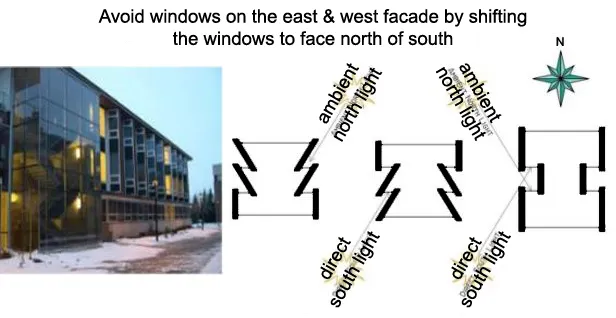
- Use vertical fins, Spacing is an issue, as well as fin length. Must be understood that if to be effective, they will severely restrict the view.

ii) Living awnings
- Living awnings such as deciduous trees and trellises with deciduous vines are very good shading devices. They are in phase with the thermal year-gain and lose leaves in response to temperature changes.
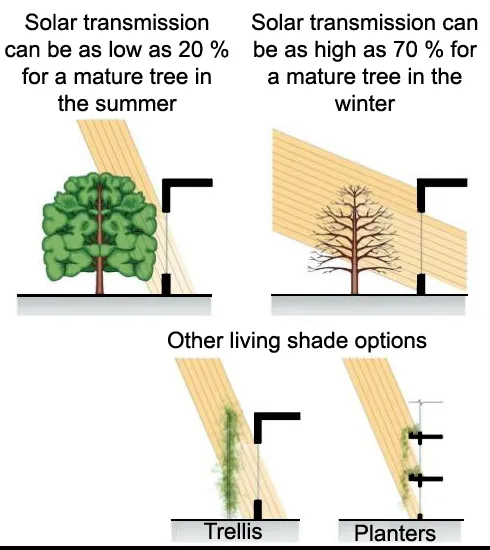
Overall, the design of shading devices should balance the functional requirements of blocking sunlight with the desired aesthetics and energy efficiency of the building.
Great insights on shading devices! I particularly loved the examples you showcased and how they can enhance both aesthetics and energy efficiency in architecture. It’s fascinating to see how design plays such a crucial role in comfort and sustainability. Looking forward to more posts like this!
This post on shading devices is incredibly insightful! I love how you’ve broken down the various design approaches and their applications. The visuals are particularly helpful in understanding the concepts. I can’t wait to implement some of these ideas in my own projects!